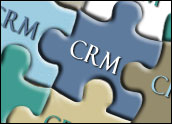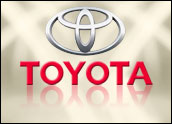
I’ve written several CRM Buyer Guides in the last four years, and the buying process I recommend hasn’t really changed much. Unlike people who leap into the technology right at the outset, I always advocate a period of self-assessment for the company — in other words, a thorough internal examination of how a business works and what the employees in the business do.
Without this assessment, it’s impossible to define the requirements that should drive the CRM purchasing decision. This self-assessment needs to be honest and unsparing of people’s feelings — and if the people in-house can’t do it without exposing raw emotions or enduring blows to their egos, it may be better to have a third party to facilitate this.
Part of this task involves the mapping of internal processes, both the ones that work and the ones that don’t work. Those that work should be preserved; those that don’t should be replaced. Processes that need to be replaced are great indicators of the kinds of features you should look for in your CRM solution.
The Outside-In Approach
This set of tasks can be very revealing about a company. It can guide not just technological purchases but also changes to the processes the company uses to manage customer relationships and customer data. In smaller companies, it may even forestall a CRM purchase — changes to process and to how people are working may clear up the problems that drove an initial push toward CRM.
As I was writing this, I also had the good fortune of talking to Dick Lee, the president of High-Yield Methods and a guru in the field of organizational design. He is adamant about the idea of creating processes from the outside-in, making the customer the priority. Even as it improves the customer experience, this process actually achieves the business’ goals for efficiency, because it eliminates processes that are not necessary to serve the customer. Many of these processes were created to serve business needs that no longer apply, but there was never a mechanism to retire them — so they kept on being done long after they ceased serving any need for the business or customer alike.
While talking to Dick, it hit me: CRM is largely about applying technology to squeeze productivity out of the sales and marketing side of the office — the last areas in business to be optimized that way. Whether it’s spoken or not, productivity is the goal. But what if you have your sales and marketing people doing the wrong tasks? Will your CRM solution tell you that? It isn’t likely.
More Productive, or Just Busier?
Without an understanding of how their processes work — or without the “outside-in” view of processes — businesses can very easily deceive themselves into thinking that, after the implementation of CRM software, they’re more productive simply because they’re doing, recording and tracking more data. In reality, they’re getting the same results with more effort — and, I might add, with the burden of the CRM investment on the books. They may be “productive,” but if what they’re producing isn’t closed sales, happier customers and higher revenues, then what’s the point?
Instead, get those workers aligned around what you want them to achieve first, adjust the processes they use, then use the technology to make it easier and faster for them to reach those achievements. If you approach it in that order, you should see improvements in your results even before any type of automation is introduced — and when it is deployed, then you should see a far healthier return on investment.






















































